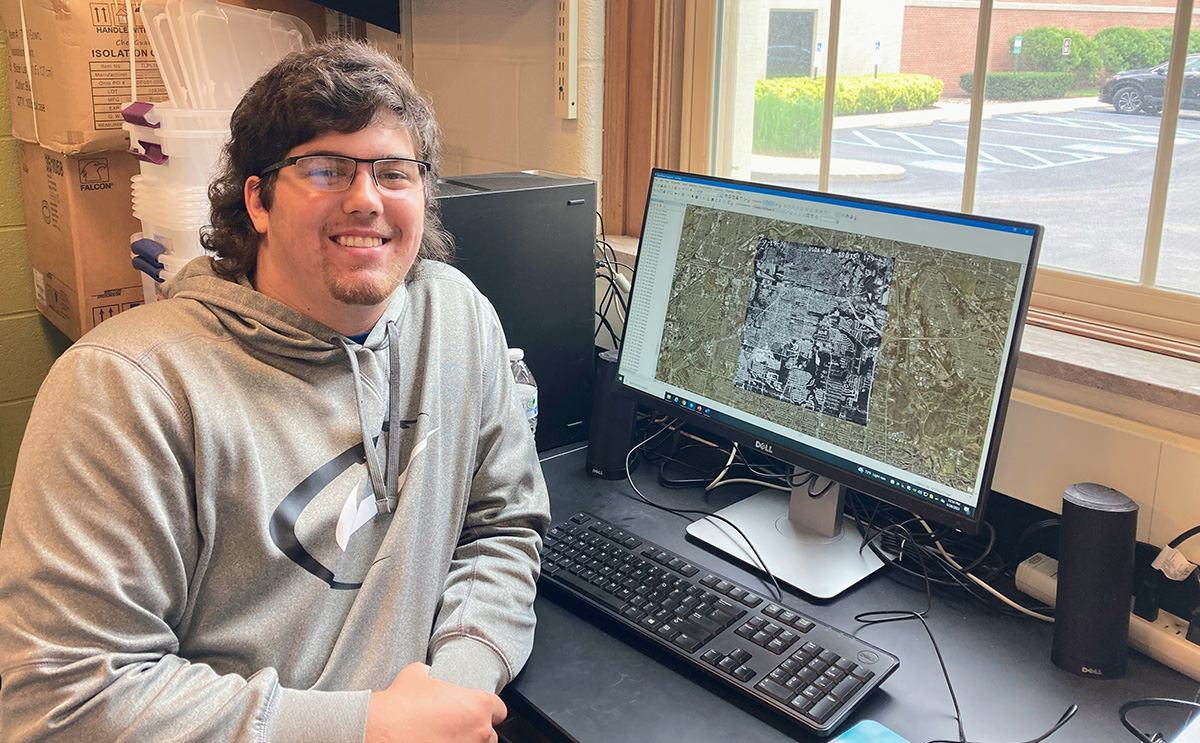The study looked at more than 220 years of data to chart how the development of Greater Cleveland has shaped the region's forests and offers recommendations for future conservation.

Although Cleveland has a proud history of preserving greenspace through a robust Metroparks system and a National Park, a new study from Baldwin Wallace University documents the massive and ongoing loss of forests that once thrived in the region and calls for a specific focus on forest conservation.
In research just published by the journal Urban Ecosystems, BW ecology professor Dr. Kathryn Flinn and her co-investigator, BW student Zachary Hughes '24, combed through aerial photographs and survey records to discover and document vast land use changes since Cuyahoga County was settled around 1800.
"To our knowledge, this is the first such study of a near-completely forested landscape that became a major city, one of the ten largest cities in the United States for most of the twentieth century," Flinn says. "As cities around the world consume increasing land area, this research helps us understand the effects of urbanization on forests and how we can protect and restore biodiversity."
In "How a city shapes its forests: Land use change and forest distribution around Cleveland, Ohio over 220 years," Flinn and Hughes conclude that conservation efforts should protect remaining forests from development — especially primary forests that were never cleared for agriculture — and encourage steps that may lead to the recovery of native biodiversity in forests growing on former farmland.
"Our findings show that while clearing for agriculture was the primary cause of deforestation in the nineteenth century, the demise of farming in Cuyahoga County led to gains in forest area on former farmlands, doubling the amount of forest," Flinn explains. "Then some of these gains were reversed as suburban and urban development fueled forest loss from the twentieth century to the present."
That development includes housing, of course. And the green expanse of lawn so many homeowners prize comes at a price. Since 1979, 23% of new development and 44% of new lawns destroyed forests.

In addition to forest loss, there are documented changes to the types of trees that appear in Northeast Ohio's woodlands, with oak, slope and riparian forests overrepresented compared to the forest ecosystems that existed prior to settlement.
Slope and elevation strongly influenced which lands remained and became forests, which also impacted biodiversity.
"The tendency for developers to leave both slopes and river valleys forested likely contributed to the bias toward oak forests since these trees thrived in both locations in the circa-1800 landscape. By contrast, beech forests and species of the flatter, higher-elevation Allegheny Plateau are scarce," explains Flinn.
Forest fragmentation is also at work. In fact, most forest patches are less than 45 acres and 75% of points in forest fall within 50 yards of an edge.
"The spatial characteristics we observed suggest a strong influence of fragmentation. This is concerning because fragmented and isolated patches of forest can have a loss of species diversity and become more vulnerable to invasion."
Because almost 99% of the region's landscape was forested prior to settlement more than two centuries ago, forest species are native species, and native species are critical in preservation efforts.
Forest cover, now 21% of the landscape, is unlikely to increase in the future because there is essentially no more farmland left in the county that can be converted to forest. At the same time, there is essentially no more farmland left to develop, so new development increasingly threatens forests.
Flinn says it is crucial to preserve remaining primary forests that were never cleared for agriculture because they harbor most of our native biodiversity. Cuyahoga County is lucky in that one-third of its forests belong to this type, a higher proportion than most other landscapes. This new study provides the historical information needed to identify these primary forest remnants.
"Mature forests are Northeast Ohio's natural heritage and our connection to the past. They contain what is special and unique about Northeast Ohio," Flinn says.
But those who care about the natural landscape should also consider how to restore native biodiversity to the post-agricultural forests, most less than 85 years old, that comprise two-thirds of forest cover.

As for Flinn's student co-researcher, Zak Hughes (who is now published in a major academic journal), the experience was an "amazing" confidence booster.
"I learned so much about what research is all about and the hard work that it takes to complete research," Hughes said. "With this research experience, Dr. Flinn was able to help me reveal a better side of myself and gave me confidence going forward to trust myself. The research experience helped me figure out my future path in life and helped me figure out who I am."
The senior biology major from Parma, Ohio, aspires to pursue a career in wildlife conservation or animal rehabilitation.